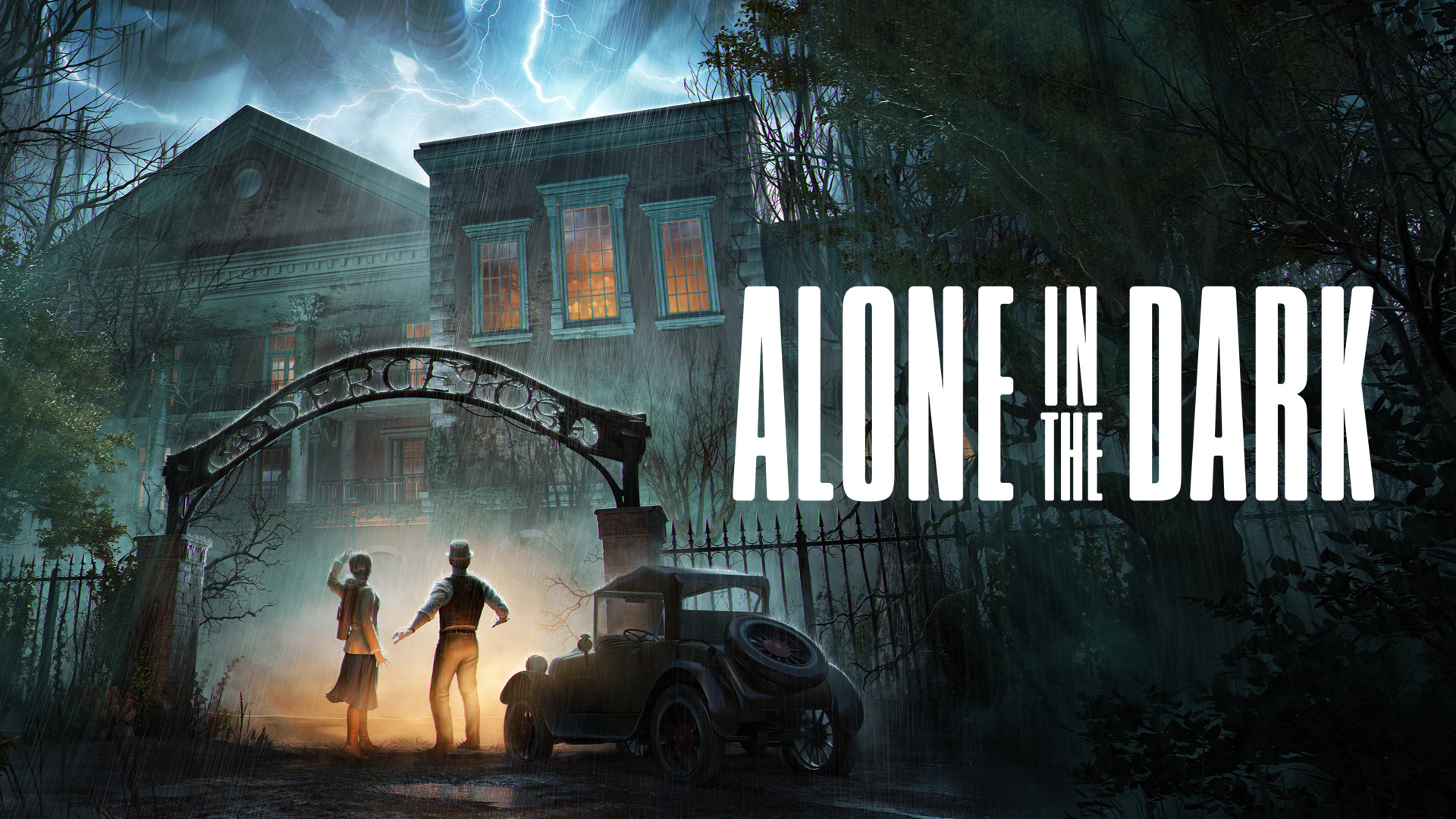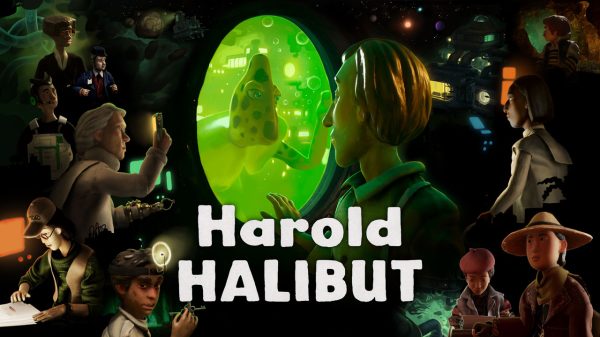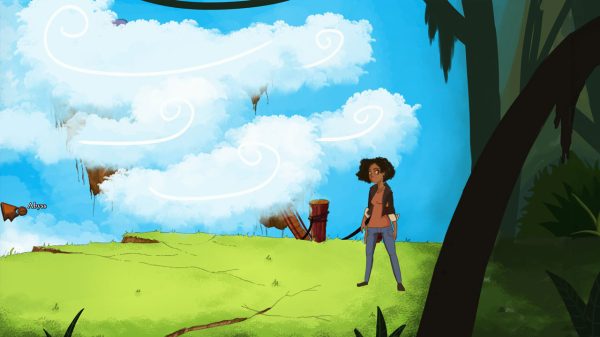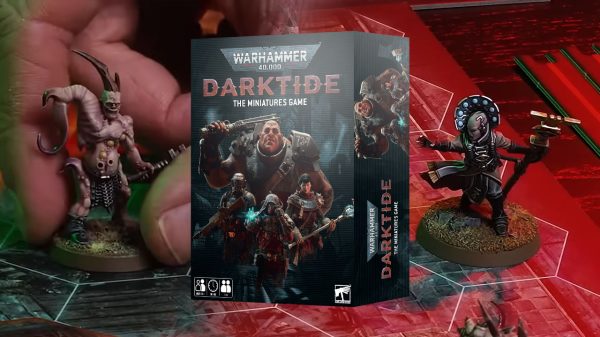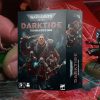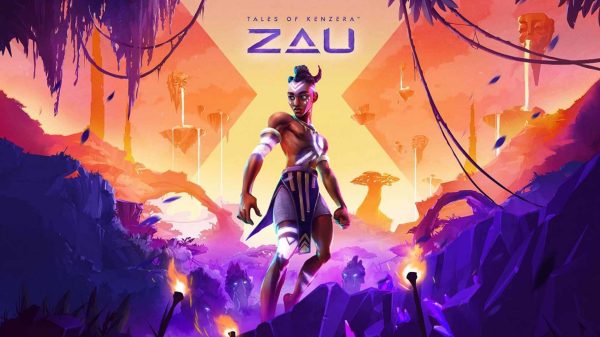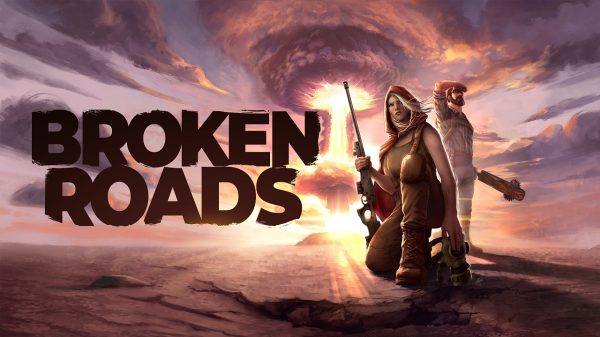Frankly, I don’t know how to begin with Alone in the Dark. Typically, this kind of explicit admission of critical inarticulateness follows a game that dismantles the tools and language of a review and leaves me with little else to say but a soft wow, in so many words. But Alone in the Dark, the latest reboot attempt for the flailing franchise that effectively defined survival horror, resists evaluation the same way it resists basic coherence. The game’s mechanical simplicity belies its feverish rambling of a plot, a complete narrative freefall through rudimentary genre staples where every hour of the dozen you’ll spend here sees a rug pulled or shark jumped.
Using a mental health institution as horror backdrop feels like the kind of regressive choice you’d make in trying to stay loyal to recreating a game from the early 90s, but Alone in the Dark’s Derceto Mansion adopts the name of its origin point and little else. Instead, the game couches this extravagant hospital in 1920s sickly glamour, as a small cast of carers and patients are embroiled in cultish mysteries and otherworldly horror. Into their strange little home, you’ll jump into the shoes of either Emily Hartwood (Killing Eve’s Jodie Comer) or Edward Carnby (David Harbour of Stranger Things fame). Emily’s uncle Jeremy has been confined to Derceto, afflicted by the “family curse,” but a recent letter to Emily sparked her concern and with detective Carnby in tow, the two broach the overgrown outskirts of New Orleans
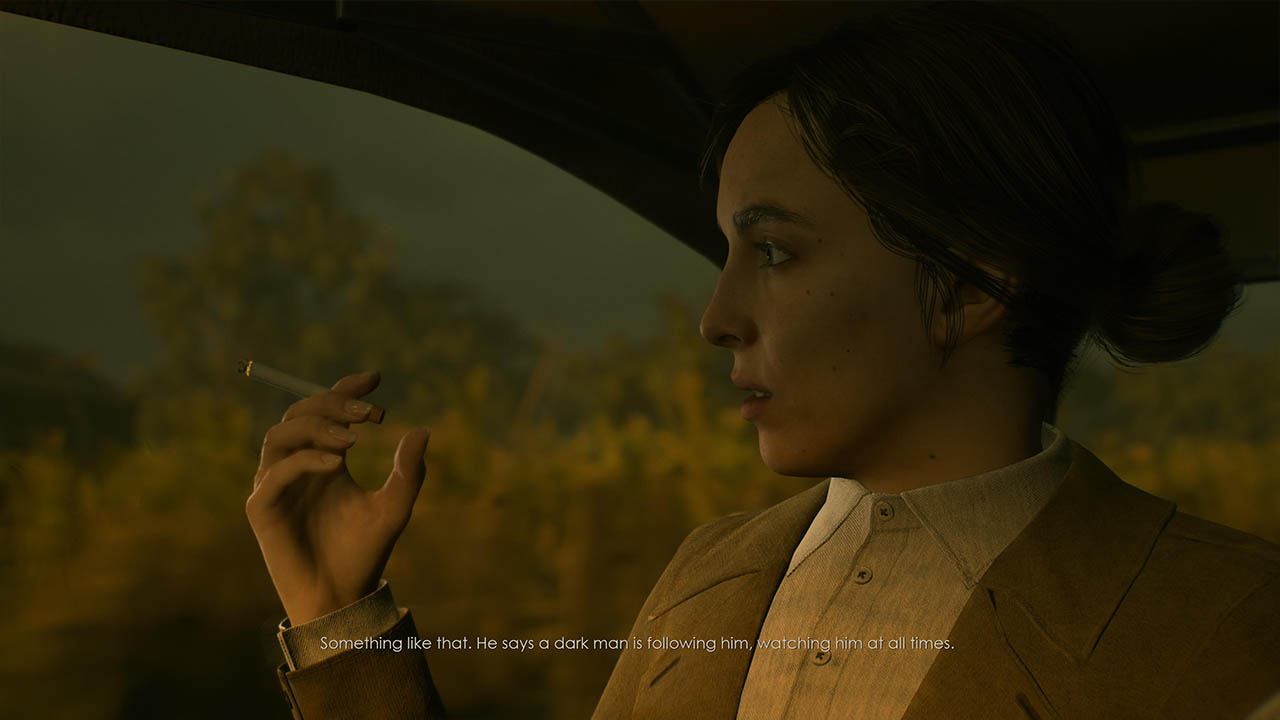
She runs the mother asylum
As the mismatched pair rattle down a backroad flanked by bayou and setting sun (the first of many Resident Evil 7 riffs), Emily drags on a cigarette and waxes poetic about the Hartwood affliction. Seems that everyone in her family is at some point “claimed” by melancholy— the older they get, the more susceptible to succumbing to this sword of Damocles that hangs over the bloodline. It’s almost something, the titular dark you find yourself alone in being the murky depths of depression not exactly revolutionary but novel enough to navigate the potential sensitivities of the game’s tropey setting. These scenes, like many throughout the game, are intensely melodramatic, the language and Noir-stylised parlance of the era colliding with a script that flirts with metaphor and camp but never finds the courage to go for a kiss.
Before entering Derceto proper, you’re prompted to choose between the two characters, certain collectibles and scenes unique to each. But given the plot’s almost singular focus on the Hartwood curse, playing as Carnby first is an active detriment to an already weak story and a truncated compression of the same events that feel (relatively) more organic to Emily’s playthrough. I say relative because there isn’t much in Alone in the Dark that feels organic, from character actions to theme to basic plot structure and flow. Things will simply happen to these characters, often resulting in moments where you begin to wonder if their inhuman indifference in the face of the absurd is an intentional joke.
Jeremy Hartwood’s demons have seemingly come to life, his depression and anxiety metaphysically manifesting as memory scapes through which Emily must battle the Dark Man, the final boss embodiment of his struggles. Taking heavy inspiration from Lovecraft mythos, this Dark Man eschews the overt racism of the original but still manages to stumble into its own rendition of the same issues. A towering figure clad in Egyptian garb and striking mask, the Dark Man is an oddity, at times deployed with surprising poignancy and at others bewildering meaninglessness.
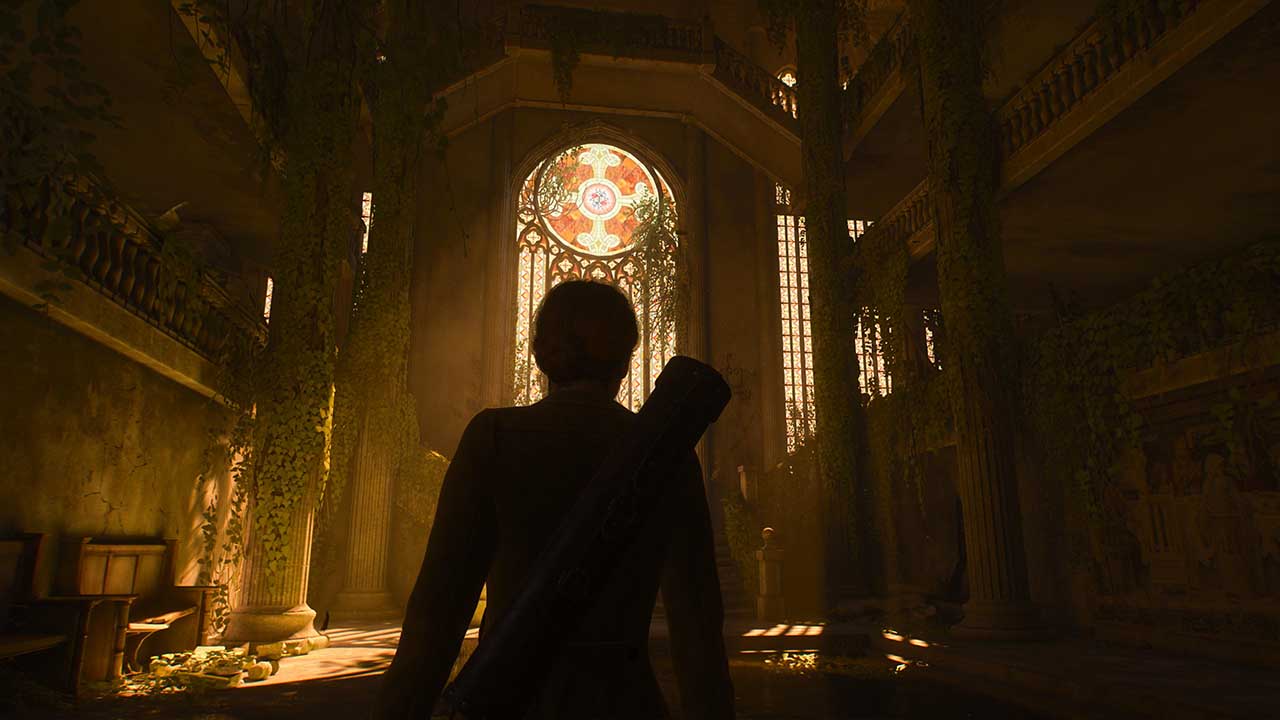
Alone in the Dark features some pretty impressive environment design and vibes
There’s a particular moment toward the end of the game in which the Dark Man forces Emily to confront some of her own trauma and the interplay between his silent watchfulness and Comer’s subdued performance of pain and anger is sincerely fascinating, a brief eclipse in which Alone in the Dark’s intentions and execution finally align. It’s fleeting but it helps square away the game’s ideal version of itself, making its primarily clumsy experience even more frustrating. These gestures toward a better version of the story are abandoned with shocking recklessness as you hurtle toward a third act that feels like a Simpsons parody of Twin Peaks. It feels as if there is half a game missing, something you’d imagine would be remedied via the two supposedly distinct playthroughs on offer but Alone in the Dark plays with half a deck no matter your approach or taste for the silly or macabre.
The fundamentals of third-person survival horror as perfected by modern Resident Evil are shot through Alone in the Dark. Derceto’s grand halls and interconnected layout is rife with the usual suspects, locked doors and lost keys, visual puzzles, and hidden items (which can be gathered to unlock additional endings, one of which made me cackle but not in the good way). There isn’t much that will break your brain but small things like aligning mold stains and deciphering basic codas are satisfying all the same, the game’s logic and contextual puzzles easily its most rewarding system. Conversely, combat is unremarkable, dragging the game’s (relatively) strong environmental work down with frustrating enemy design and awkward stealth sequences.
When you’re not forced to steer these molasses-coated characters past insta-kill foes, you’ll need to dump ammo into skittering targets and spongey bosses. It’s a dull slog made worse by the game’s complete lack of enemy design, an odd wobble for an experience that has an otherwise solid grip on its decent art direction. These globby creatures (another less than subtle RE7 nod) run amok through Alone in the Dark’s environments like an infection, making even the fantastic, heightened locations of Jeremy’s metaphysical hellscape worse. Fortunately, there aren’t all that many of them and when you’re left to your own devices, you can soak in some of the game’s great sound design and overall decent atmosphere.
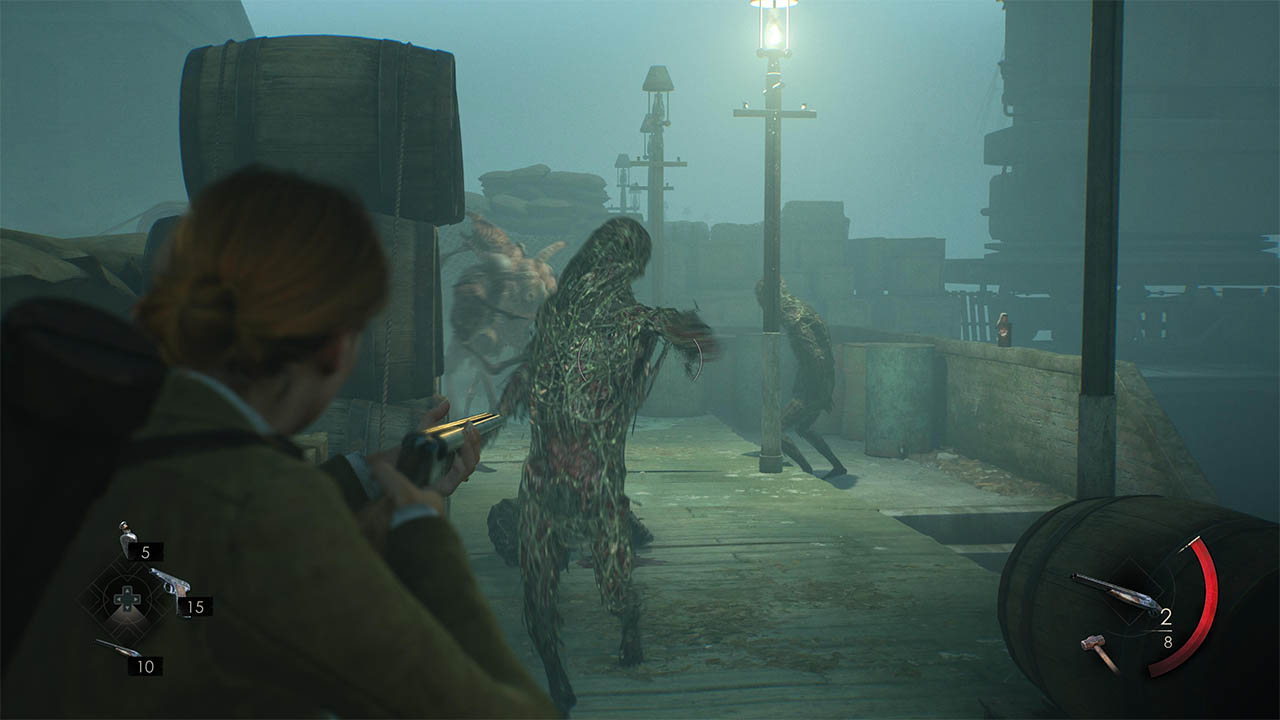
Combat is functional but pretty dry
It’s emblematic of Alone in the Dark’s major tension point— everything it does is almost there. Harbour and Comer are crying out for a more tonally concrete script, their performances feeling almost playfully self-aware while still allowing for moments like I talked about earlier in which emotional pathos feels almost within reach. The game generally looks great, a little crunchy but not in a significantly dampening way, but these environments can only do so much to ground a game that’s only almost interested in being about something or even anything.
Final Thoughts
Alone in the Dark (the franchise) being the progenitor for so much of what we love in survival horror, only to find itself afflicted by its own kind of curse in the decades following its initial success is genuinely tragic. This latest iteration comes closer than its predecessors to claiming a seat back at the table but its inability to conceive of an identity beyond contemporary mechanics and well-worn tropes leaves it wanting. There’s a version of Alone in the Dark 2024 that found a way to lean into its absurdist concepts and performances but self-seriousness and a lack of focus makes for a game fumbling for the lights. Slap the boards back over the windows of Derceto, maybe we can open it up again in another thirty years.
Reviewed on PS5 // Review code supplied by publisher
Click here for more information on WellPlayed’s review policy and ethics
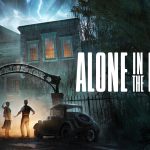
- Pieces Interactive
- THQ Nordic
- PS5 / Xbox Series X|S / PC
- March 20, 2024



One part pretentious academic and one part goofy dickhead, James is often found defending strange games and frowning at the popular ones, but he's happy to play just about everything in between. An unbridled love for FromSoftware's pantheon, a keen eye for vibes first experiences, and an insistence on the Oxford comma have marked his time in the industry.





